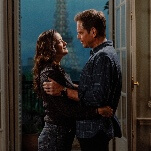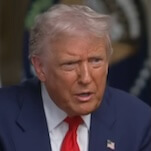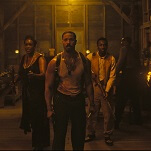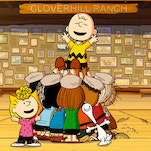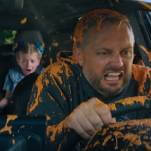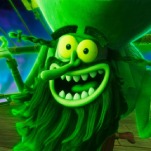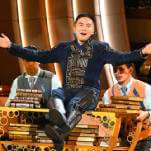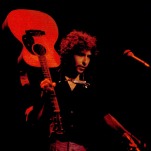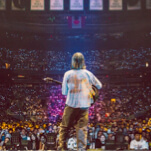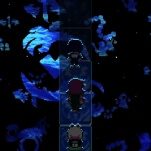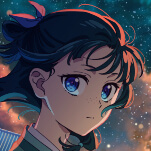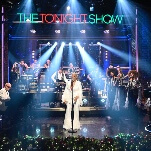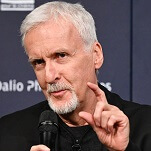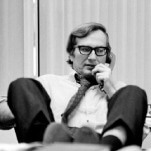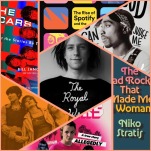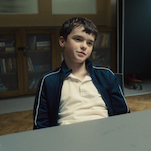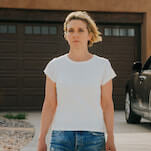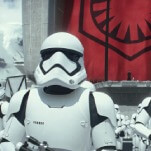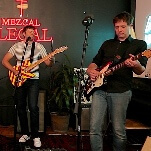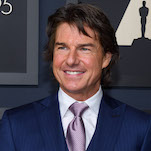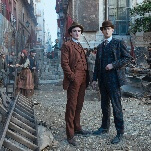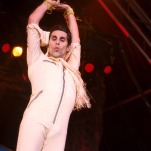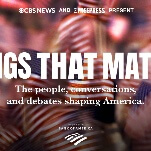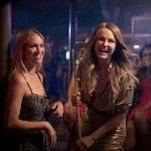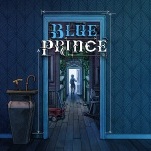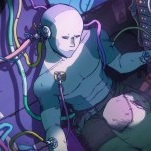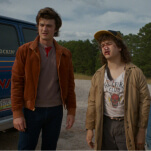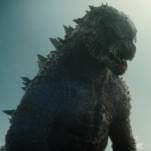Steven Hyden responds:
Good eye, Greg. Not only is the TV version of Airplane! different from the theatrical version, but according to the IMDB, there isn't even a single definitive TV version of the comedy classic: The TBS version is listed as including the extended scenes between the two kids talking about black coffee and the Small Business Administration, but those scenes aren't necessarily a part of other broadcast versions. (Those versions might include other scenes, like Elaine exclaiming "The corn! The corn!" as Ted flies over Iowa.) So the movie you saw on one channel might not be the same movie on another.
This phenomenon isn't limited to Airplane! You can find background info and video clips online of TV-only scenes for The Jerk, "Fast Times At Ridgemont High, Scarface, and Star Trek II: The Wrath Of Khan, among other movies. These scenes might have been shot specifically for TV, but it's more likely that they were cut from the theatrical version and re-inserted to make up for any violence or nudity that had to be removed. In the case of Fast Times At Ridgemont High—which at 90 minutes, needs some serious padding once you remove all of Jennifer Jason Leigh's nude scenes—the "TV-only" content is substantial and often memorable. (In one TV version, there's a great scene where Spicoli talks about meeting Mick Jagger.) Some of these deleted scenes have appeared as extras on DVDs, but often, they live on only in random TV viewings and the memories of fans.
Extra, Extra (Take #2)
Why are there all those extra blank pages at the end of books? I always thought it was an even-page thing, but I've seen books that end up with an odd number of pages, with blank pages in the back. Do publishers just hate trees? Is there a secret recycling war going on that I, as a meager peon on the American ladder, shouldn't know about? Am I just stupid and missed an easy answer on Wikipedia?
ElJuski
Tasha Robinson looks a little blank herself:
It isn't about wasting paper, ElJuski, it's about efficient printing processes. Pick up just about any mass-market book off the shelf and look at the top of it, head-on, so you can see the top edges of the pages. Depending on how that book was bound, chances are excellent that where the pages meet the spine of the book, you'll be able to see subtle little divisions, segmenting those pages into equal groups.
Those segments are called "signatures," and each one consists of a single large sheet of paper, folded two to 64 times to produce between four and 128 pages. Then the edges are trimmed off to separate those pages, and the signatures are glued, stapled, or sewn together into book form. So you do always end up with an even number of pages, unless someone's torn one out. Bookbinding has been done this way for many centuries; it's secure and efficient, unlike any method that involves trying to fix individual leaves of paper together. If you've ever had one of those little blank stationery-store books with wax holding individual sheets together, or a "perfect bound" collection of photocopied college handouts, you'll know what I mean; once a wax or glue backing has been flexed enough, the individual pages start popping out. Which may be fine for something cheap that's only meant to last a semester or so, but people expect more from books, especially at $25 a pop for the average hardcover. If you're a Wikipedia fan, I'd recommend their page on bookbinding, which is comprehensive and informative about all the variant methods, but what it comes down to is, that book you're holding wasn't planned by the page, it was probably planned in 64-page chunks, and if the book text only took up 126 or 253 or 380 pages—anything not easily dividable into standard printing-plant signatures—there were bound to be pages left over.
Sometimes those blank pages are deliberately positioned in the front to serve as autograph pages or to put a space between things like the copyright page, introduction, table of contents, etc. Sometimes they're in the back as spacers before the bibliography, index, notes on the book design, etc. That's just an aesthetic choice. Either way, few book designers actually number all the pages; generally, only the pages with actual book text on them will be part of the numbering system, and introductions or endnotes may be numbered separately. So just because your novel ends on page 355 doesn't mean there are an uneven number of pages.
Why don't the publishers just make the text bigger, so all the pages are filled? Before I came to work full-time at The A.V. Club, I worked in layout and design, and let me tell you, when you have a whole lot of text lined up—hundreds of pages' worth, for instance—even the smallest change (say, going from 12-point text to 12.01-point text) can make several pages' worth of difference. Yes, you can fiddle with the margin size, the leading (vertical space between text lines), the kerning (space between letters), and the font size until you've efficiently filled every possible page in your book. But spacing pages, opening pages, and closing pages are often considered classier, just as having space around the furniture in a room or the art on your walls generally looks classier than cramming something into every possible available square inch. So enjoy your blank pages. The book would have as just as many pages if the text were spaced out a little more to cover them, but then you wouldn't have any space for notes and autographs.
PAL-ing Around
As all film geeks know, some movies are only available on DVD in foreign countries, and DVDs from those countries won't play in American DVD players. I thought it was all about region codes (with Region 0 being universal), until I saw a disc for sale that was designated "Region 0 PAL." Essentially, what I want is a DVD player that plays any disc regardless of Region or PAL/NTSC considerations, and will play them on an American TV set. I definitely do not want to get ripped off here. Has anyone at The A.V. Club ever done this? Is is even possible? Should I just turn back now?
Joe Blevins
Noel Murray is always region-free and code-free:
Joe, you're correct in assuming that a PAL disc won't necessarily work with your equipment just because it's "region free." The region codes refer specifically to which market the DVD player is intended to be sold in, and has nothing to do with the TV sets to which those players will be hooked up, which is where the PAL vs. NTSC issue matters most. A Region 0 PAL disc probably won't give your U.S.-targeted DVD player any trouble as far as loading and playing is concerned, but the image it outputs might not register on your screen.
But then again, it just might. Some DVD players automatically convert PAL signals to NTSC, without even advertising that feature as a feature. And some sites that sell region-free players offer "conversion kits" that will make sure that PAL discs will at least send an image to an American TV, even if it isn't necessarily top-quality. My advice? Check online to see if your player converts PAL. If it doesn't, most of the people I've talked to have said it's cheaper to find a DVD player that does convert than to buy one of those kits. The lower-cost players often use hardware purchased from companies that manufacture components designed to ship all over the world, so they either convert automatically or can be easily modified so to do the job.
Next week: No column, as we'll be off for Thanksgiving weekend, and the site won't update on Thursday or Friday. But we'll return in two weeks with questions about us, a mud monster, a good doctor, and whatever else you throw at us in the interim. Send your questions to [email protected].

